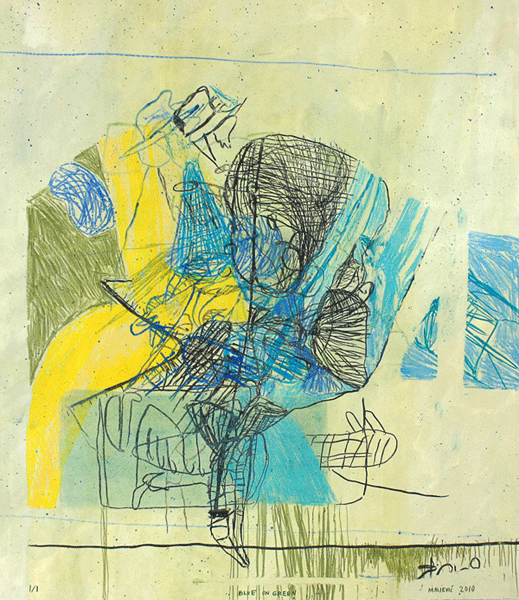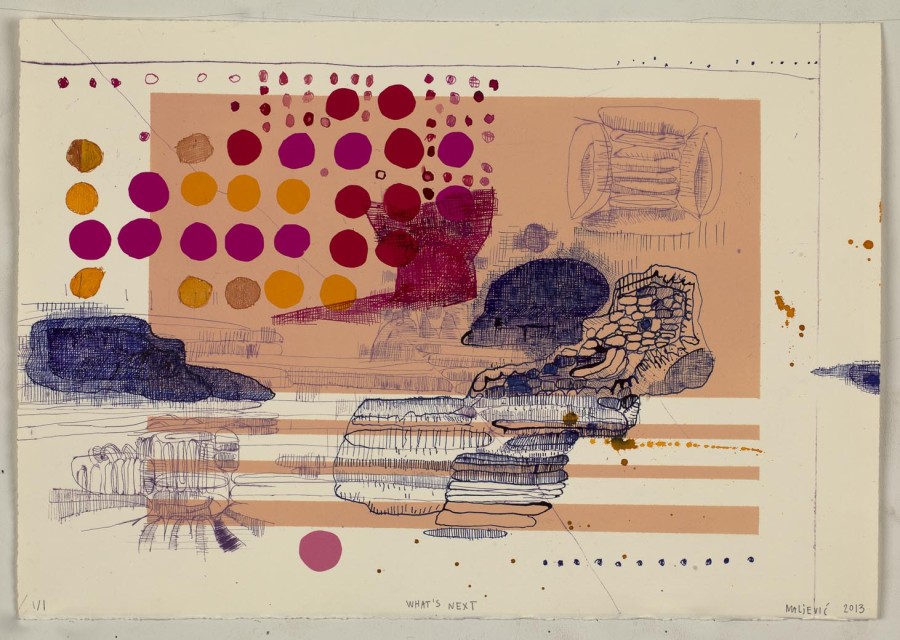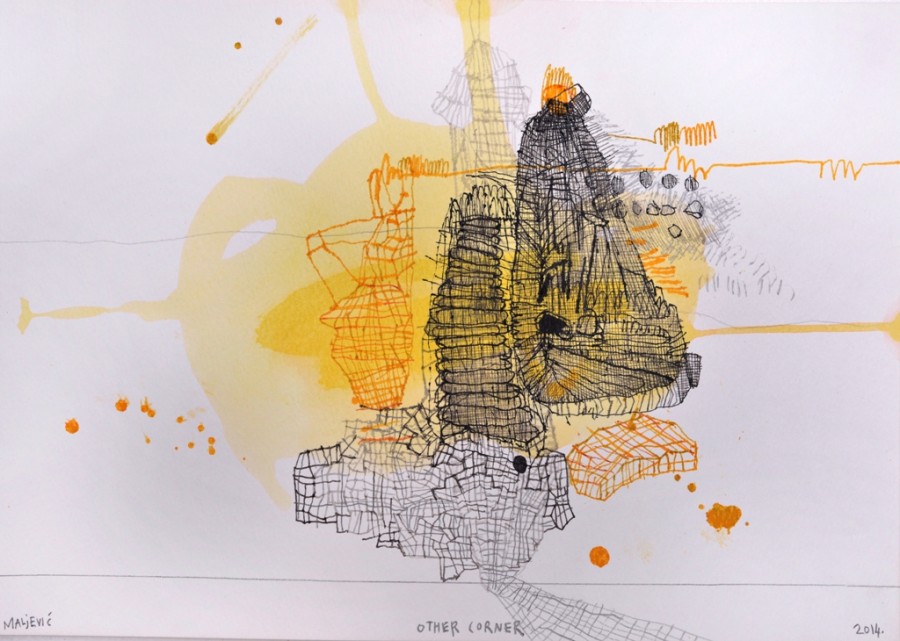Maja Maljevic
Maljević cites the German Expressionists as a major early influence, and has also drawn inspiration from the work
of more recent artists such as Philip Guston, Cy Twombly and Jean-Michel Basquiat. She relates that in her first few years
at university she loved more than anything to draw the sculptures of Michelangelo, smitten with the bold and monumental perfection of his work, which was simultaneously so real and unreal. Alongside the visual arts she has often expressed
the impact on her work of growing up with the sounds of new wave, punk, rock and roll and then later grunge music,
which formed a big part of her everyday life. All these things, in the life of an abstract painter, contribute to the pictures
she paints, painting being a procedure involving the ‘excavation of memory and taste’ [1].
However, although she works intuitively, her concerns are predominantly formal. Her interest, for instance, in the relationship between two shapes within a composition is informed primarily by an interest in the shapes themselves
rather than the arrangement’s capacity to be symbolic of an experience or representative of an essential emotional state.
In as much as Maljević unravelled her traditional training in order to find her own voice, her grounding in the academic
and the classical allowed her to bloom through abstraction, engaged in an act of creation that sidesteps diegesis.
Maljević’s particular style, in which she has been training herself since then, begins with the “dirtying” of the canvas
with a layer of bright paint that breaks the baldness of the white surface and opens up the space for Maljević’s intuitive jigsaw endeavour. Onto this ground, Maljević builds up surfaces with drips, blocks, bands and waves of colour, searching
for harmony between colour and form, line and shape, expansive surface and small detail. For Maljević, physical movement is an important part of the process – never can she be found sitting at an easel. Through her own version of gestural abstraction, Maljević prevents the composition from becoming staid and self-indulgent, as she has puts it, and allows action and conflict to occur between the different elements with which she is engaged. Sometimes Maljević incorporates fragments of the world as it is happening around her while she paints, but without dictating their significance to the viewer.
Maljević’s description of her own process recalls Kandinsky, the synesthetic predecessor who sought to create visual music: ‘When I combine objects, it is not a play on their meaning and what they should represent, but rather how they clash, feed from each other, create chaos and from that chaos a perfect sound is made, like too many notes that end up
forming harmony. You take one out and everything collapses.
Maljević writes: ‘I enjoy a visual ensemble that includes the figurative and the abstract, the organic and geometric,
the obvious and the elusive. Put them all together and you get an eclectic remix where any one thing can be something else. A portrait can rise out of a still life, a still life can descend into a landscape, a finger is a toe and two legs, slightly parted, might be a whisper. To capture and describe my creative process is like putting music into words – something essential
gets lost in translation. How can you record the emotional volume present in the art of listening?’
(Text for the Spier Contemporary 2010)
[1] Thomas Nozkowski describing his own creative process in an interview with Francine Prose, published in BOMB 65/Fall 1998
Text: David Krut
AVAILABLE WORKS
Nuts and Bolts, Silkscreen with Monotype and Linocut, 310mm x 310mm
Where Non Intrudes, Lithograph, 460mm x 315mm
3x3 = 9, Lino cut 460mm x 450mm Calm, Lino cut, pencil and ink on chine colle, 460mm x 450mm
Orange game, Lino cut 460mm x 450mm
Blue on green, Mono type, ink and crayon
Sharp Surprise, Ink Drawing on Paper 295mm x 210mm
Mono type with chine colle and ink 385mm x 560mm











